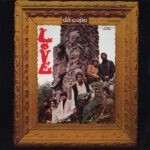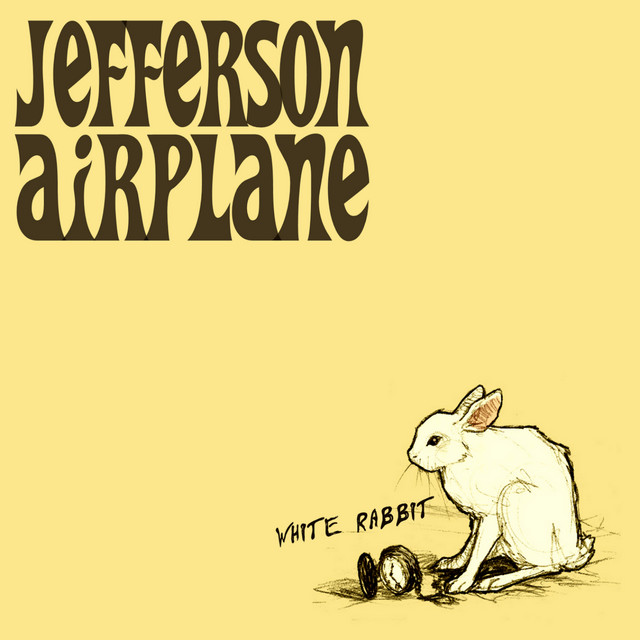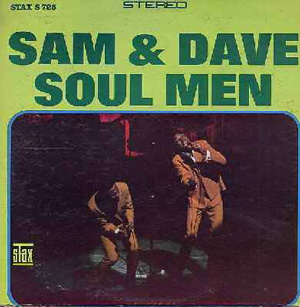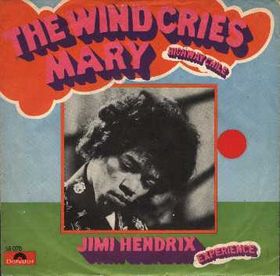 Love’s “Que Vida” is a shimmering testament to the innovative spirit of 1960s rock, a track that embodies the band’s eclectic approach to music, blending elements of folk, psychedelia, Latin rhythms, and jazz-inflected harmonies into a singular sonic tapestry. Featured on their 1969 album Out Here, “Que Vida” captures a moment in time when rock music was expanding beyond traditional structures, embracing experimentation, emotional depth, and cultural hybridity. With its intricate instrumentation, airy vocal delivery, and hypnotic rhythms, the song represents both a high point for the band and a broader illustration of the adventurousness of late-1960s American rock.
Love’s “Que Vida” is a shimmering testament to the innovative spirit of 1960s rock, a track that embodies the band’s eclectic approach to music, blending elements of folk, psychedelia, Latin rhythms, and jazz-inflected harmonies into a singular sonic tapestry. Featured on their 1969 album Out Here, “Que Vida” captures a moment in time when rock music was expanding beyond traditional structures, embracing experimentation, emotional depth, and cultural hybridity. With its intricate instrumentation, airy vocal delivery, and hypnotic rhythms, the song represents both a high point for the band and a broader illustration of the adventurousness of late-1960s American rock.
At its core, “Que Vida” is an invitation to transcendence. The track immerses the listener in a languid, sun-drenched soundscape, evoking feelings of warmth, freedom, and introspection. Arthur Lee’s songwriting and vocals, combined with the band’s rich instrumental palette, create a track that feels both intimate and expansive, personal and universal. Its timeless appeal lies in its ability to transport the listener, offering a moment of reflection and a taste of the limitless possibilities of the rock form.
Origins and Context
Love emerged in Los Angeles in the mid-1960s, fronted by the enigmatic Arthur Lee, whose vision for the band combined poetic lyricism, genre fusion, and a commitment to emotional honesty. By the time they recorded Out Here, Love had already made a name for themselves with Forever Changes, an album widely regarded as a masterpiece for its intricate arrangements and emotional resonance. Que Vida represents a continuation of Lee’s experimentation, embracing new textures, rhythms, and harmonic ideas while maintaining the introspective lyricism that defined much of Love’s work.
The late 1960s were a period of cultural upheaval and musical innovation. Psychedelia, Latin influences, and jazz experimentation were converging in American rock music, creating opportunities for bands like Love to push boundaries. Que Vida reflects these trends, blending traditional rock instrumentation with unconventional rhythmic patterns, melodic twists, and atmospheric production choices. The song exemplifies the band’s desire to craft music that was both exploratory and emotionally grounded, offering a multi-sensory listening experience that challenged expectations while remaining inviting and melodic.
Musical Composition and Style
“Que Vida” is characterized by its intricate, layered composition. The track opens with a soft, percussive rhythm that immediately establishes a hypnotic groove. Latin-inflected drumming and subtle percussion provide both movement and texture, evoking a sense of sunlit tranquility that permeates the song. The instrumentation gradually builds, introducing guitar, bass, and organ lines that weave together harmonically, creating a lush, immersive soundscape.
Arthur Lee’s vocals are central to the song’s character. His delivery is light, airy, and reflective, floating over the instrumental arrangement with a dreamlike quality. Lee’s phrasing emphasizes both melody and emotional nuance, conveying introspection, longing, and a quiet joy that mirrors the track’s lyrical themes. Harmonized backing vocals add depth and dimension, enhancing the track’s ethereal quality and reinforcing its layered, psychedelic texture.
Guitar lines are melodic and texturally rich, often using fingerpicked patterns and subtle effects to enhance the song’s hypnotic feel. Bass and organ provide harmonic grounding, with the interplay between instruments creating movement and emotional contour without overwhelming the listener. The arrangement demonstrates Love’s skill in balancing complexity with accessibility, allowing each instrument to contribute to the overall atmosphere while maintaining a sense of cohesion.
Lyrics and Emotional Themes
The lyrics of “Que Vida” exemplify Arthur Lee’s poetic sensibility, balancing imagery, emotion, and abstraction. Sung in a mix of English and Spanish, the title—meaning “What a Life”—sets the tone for a meditation on existence, joy, and the interconnectedness of experience. The song explores themes of reflection, appreciation, and transcendence, encouraging the listener to consider life’s beauty and complexity.
Lines such as “The world goes on, though I may go too” encapsulate the delicate balance between temporality and eternity, mortality and celebration. Lee’s lyrics often juxtapose the mundane and the sublime, grounding the song in relatable human experience while simultaneously evoking a sense of cosmic awareness. This lyrical approach enhances the track’s psychedelic qualities, creating a sense of floating between the personal and the universal.
The song’s lyrical structure is cyclical, mirroring its musical arrangement. Repetition and variation reinforce the meditative quality, allowing listeners to inhabit the song’s reflective space fully. The interplay between English and Spanish not only broadens the cultural resonance of the track but also underscores Love’s interest in musical hybridity and cross-cultural expression.
Instrumentation and Arrangement
The instrumentation of “Que Vida” is notable for its subtle complexity and textural layering. The rhythm section—drums and percussion—anchors the track with understated precision, emphasizing groove and feel over technical showmanship. The Latin-inflected beats contribute to the song’s sun-soaked, languid atmosphere, creating a rhythmic flow that feels both relaxed and propulsive.
Guitar work in the track is both melodic and rhythmic, blending fingerpicking with chordal textures to provide harmonic richness and motion. The organ adds atmospheric color, with sustained tones and harmonic fills that reinforce the song’s hypnotic quality. Bass lines provide a steady harmonic foundation while interacting dynamically with the drums and guitars, contributing to the track’s layered depth.
The interplay between instruments exemplifies Love’s collaborative ethos. Each member contributes to the overall tapestry of sound, with subtle variations in dynamics, phrasing, and articulation creating an evolving sonic landscape. This approach ensures that the track remains engaging across repeated listens, as each instrumental voice can be appreciated both individually and as part of the larger ensemble.
Production and Sound Engineering
Que Vida was produced with a focus on clarity, depth, and spatial resonance. The recording highlights the warmth of acoustic instrumentation, the shimmer of organ textures, and the subtle interplay between vocals and harmonics. Microphone placement and mixing choices emphasize the natural resonance of each instrument, creating a sense of space and dimensionality that enhances the track’s psychedelic qualities.
Vocal harmonies are mixed to blend seamlessly with the instrumental arrangement, reinforcing the song’s meditative quality without dominating the mix. The production prioritizes a balance between intimacy and expansiveness, allowing listeners to feel enveloped in the music while maintaining clarity of individual musical lines. Subtle effects, including reverb and delay, contribute to the dreamlike atmosphere, enhancing the sense of floating and reflection that defines the track.
Musical Analysis
Technically, “Que Vida” demonstrates Love’s ability to integrate diverse musical influences into a cohesive framework. The song employs modal harmonies, jazz-inspired chord voicings, and folk-rock melodic sensibilities, creating a sonic palette that is both sophisticated and accessible.
Rhythmic subtleties, including syncopation and polyrhythms, contribute to the track’s hypnotic flow. The layering of instruments—vocals, guitars, organ, bass, and percussion—produces a texture that is intricate yet airy, allowing each voice to interact dynamically while maintaining harmonic clarity. The cyclical structure reinforces both the meditative quality of the lyrics and the hypnotic momentum of the music, emphasizing repetition as a means of deepening emotional resonance.
The song’s melodic lines are carefully constructed to convey emotional nuance. Lee’s vocal phrasing, in particular, demonstrates control, subtlety, and expressiveness, with each note serving both harmonic and narrative purposes. Instrumental fills and counter-melodies enhance the song’s depth, creating a multi-dimensional listening experience that rewards attentive engagement.
Cultural Impact and Reception
Upon its release, “Que Vida” received praise for its innovation, musicality, and emotional resonance. While not as commercially prominent as some of Love’s other tracks, it quickly became a favorite among fans and critics, showcasing the band’s ability to craft music that was both adventurous and emotionally engaging.
The track’s incorporation of Latin rhythms, folk-rock sensibilities, and psychedelic textures exemplified a broader trend in late-1960s rock: the blending of diverse musical traditions to create something uniquely American yet globally conscious. Que Vida has influenced musicians across genres, from contemporary psychedelic rock to Latin-influenced pop and indie music, serving as a touchstone for experimentation and cross-cultural synthesis.
The song has also appeared in retrospective discussions of Love’s catalog, often cited for its lush instrumentation, reflective lyrics, and atmospheric sophistication. Its enduring appeal lies in its timelessness—the ability to transport listeners to a sunlit, introspective space regardless of the era in which it is heard.
Emotional Resonance and Thematic Depth
“Que Vida” resonates emotionally because it balances lyrical introspection with sonic richness. The song evokes warmth, contemplation, and a sense of existential wonder, creating an immersive listening experience that engages both mind and heart. Its themes of reflection, appreciation, and interconnectedness are universally relatable, allowing listeners to project personal experiences onto the track while absorbing its inherent beauty.
The interplay between music and lyrics is particularly effective in conveying a meditative state. As the instruments weave in and out of the vocal lines, they mirror the ebb and flow of thought and emotion, reinforcing the song’s thematic focus on presence, awareness, and the celebration of life.
Legacy and Influence
Que Vida remains a testament to Love’s innovative spirit and artistic vision. It exemplifies the band’s ability to merge diverse influences—psychedelia, folk, Latin music, and jazz—into a cohesive and emotionally resonant work. The track has inspired musicians exploring genre fusion, modal harmony, and textural layering, demonstrating the enduring relevance of Love’s creative approach.
In the broader context of 1960s rock, Que Vida represents the era’s openness to experimentation, collaboration, and cultural exchange. Its influence extends beyond Love’s immediate fanbase, shaping subsequent generations of musicians who seek to blend diverse musical traditions while maintaining emotional integrity.
The song’s legacy also lies in its timeless ability to evoke mood and atmosphere. Its hypnotic rhythms, lush instrumentation, and reflective lyrics continue to resonate with contemporary audiences, underscoring the enduring power of Love’s music to connect across time and space.
Conclusion: Psychedelic Reflection and Musical Brilliance
“Que Vida” by Love stands as a radiant example of 1960s psychedelic and folk-rock innovation. Its layered instrumentation, hypnotic rhythms, and reflective lyricism create a listening experience that is simultaneously intimate and expansive, personal and universal. The track captures the essence of the band’s eclectic vision, merging diverse musical influences into a cohesive, emotionally resonant whole.
Arthur Lee’s vocals and songwriting, combined with the band’s nuanced instrumentation, produce a track that invites reflection, contemplation, and immersion. Its modal and rhythmic subtleties, harmonic richness, and textural depth exemplify Love’s mastery of musical storytelling, creating a work that remains compelling decades after its creation.
Que Vida is more than a song; it is a sonic journey—a sunlit meditation on life, existence, and the beauty of experience. It stands as a reminder of Love’s place in the pantheon of innovative rock, a track that exemplifies the possibilities of musical exploration and the enduring power of artistry to evoke emotion, provoke thought, and transport the listener to a realm of pure musical sunlight.


